
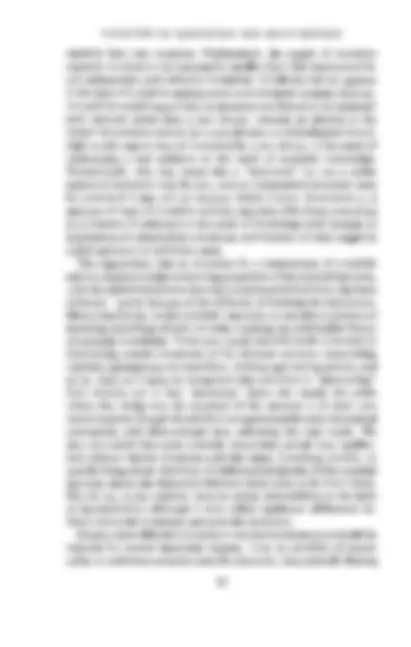
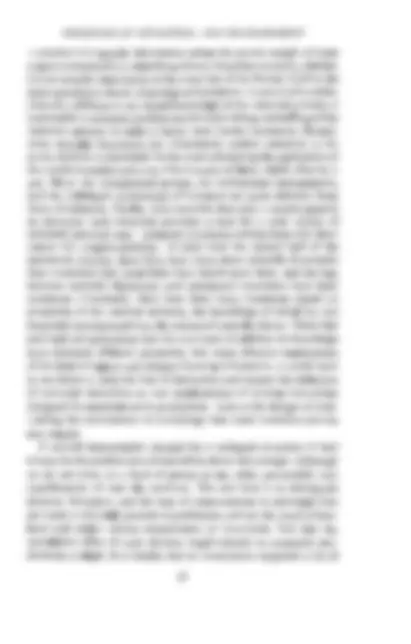
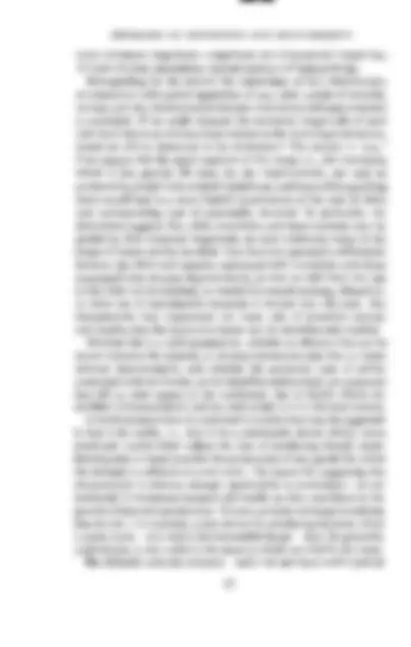
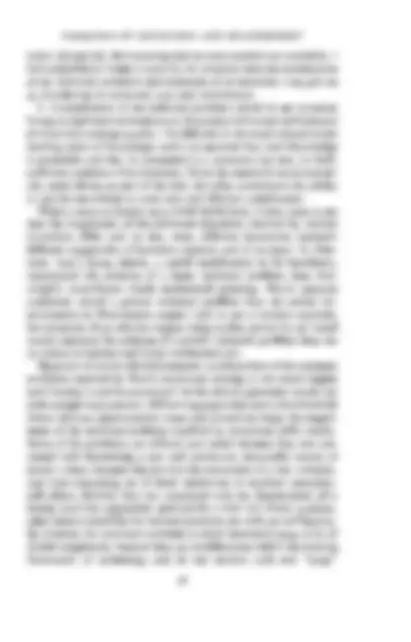
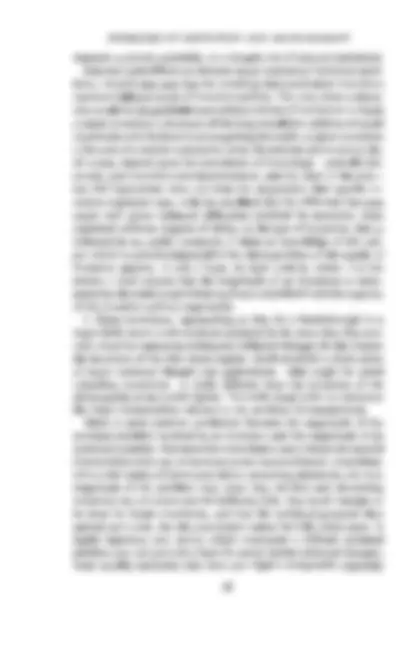
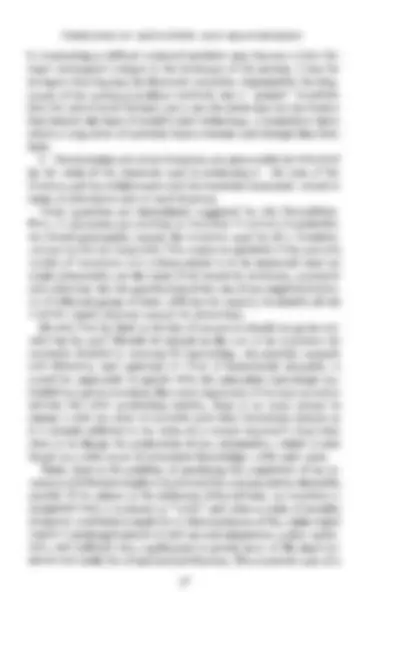
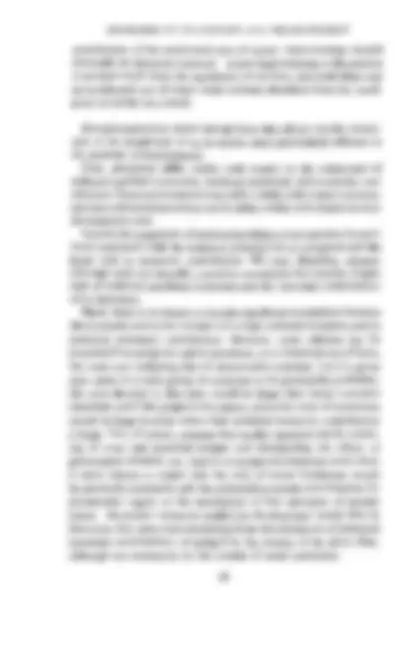
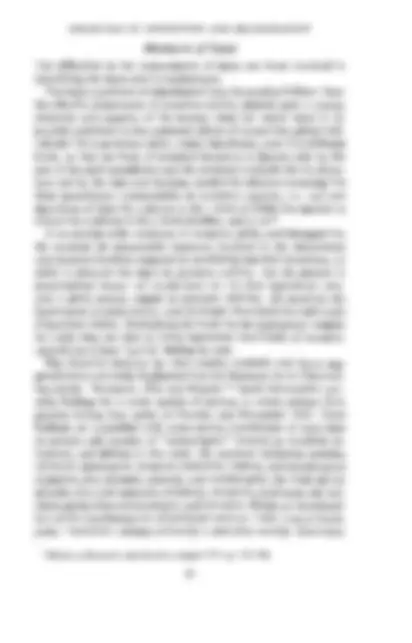
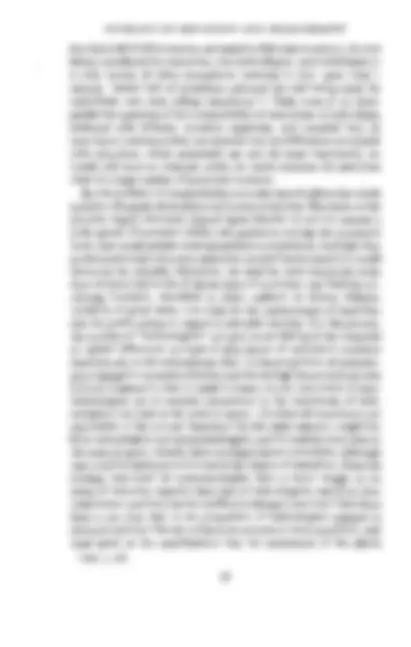
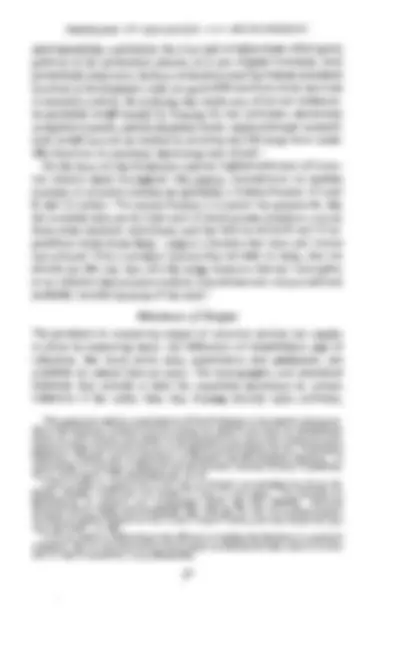
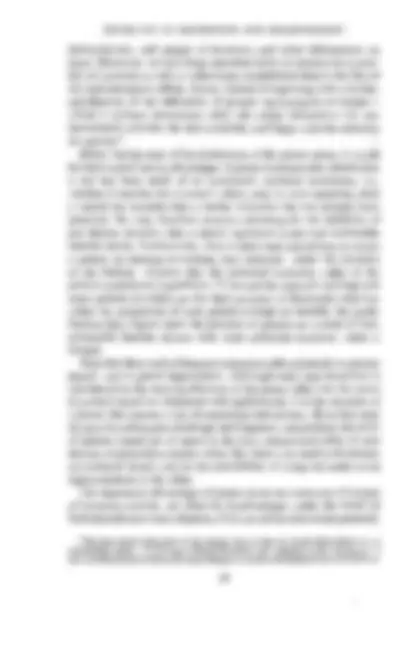
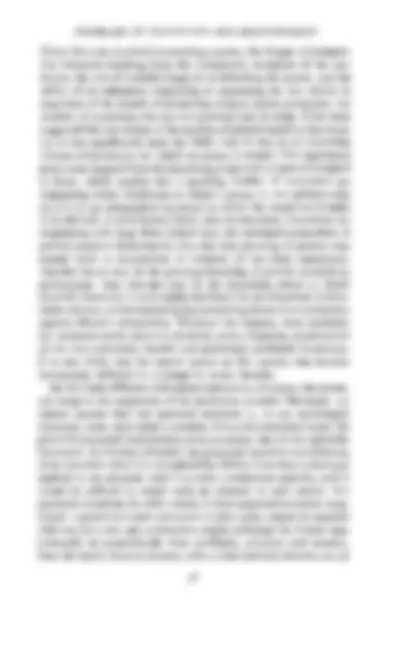
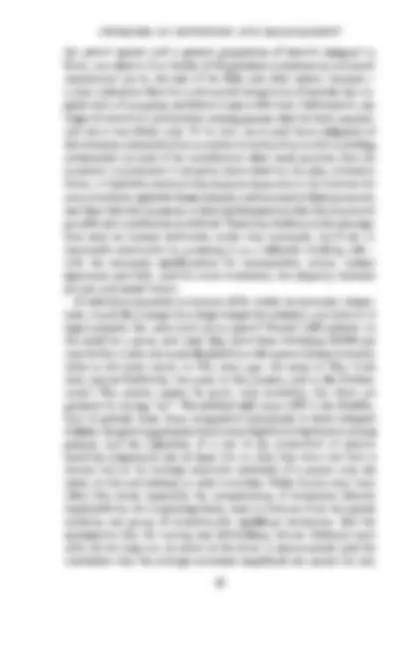
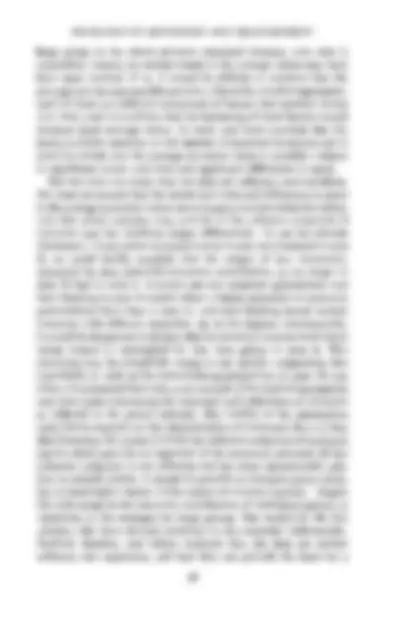
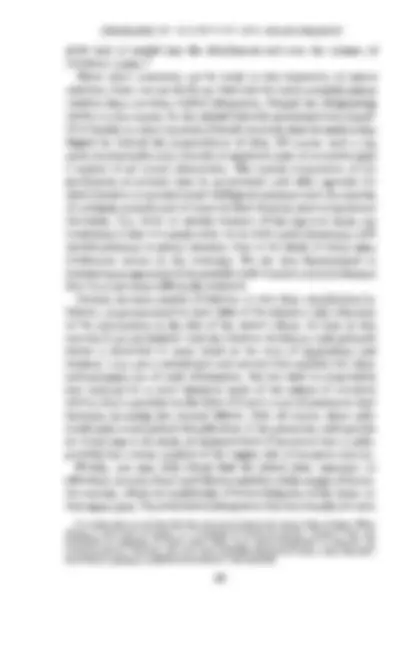
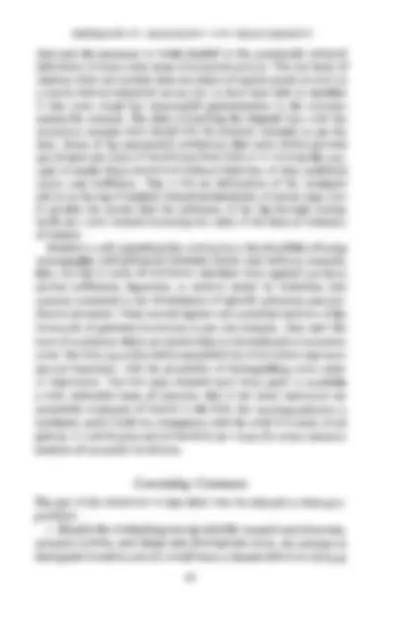
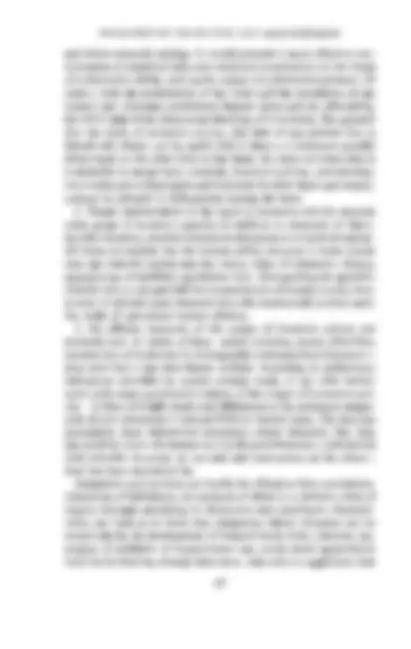
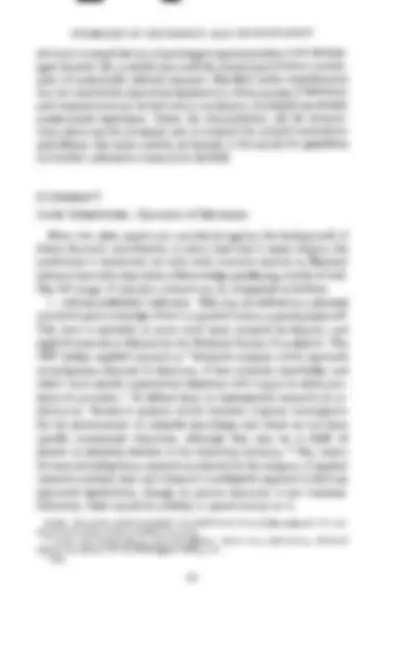
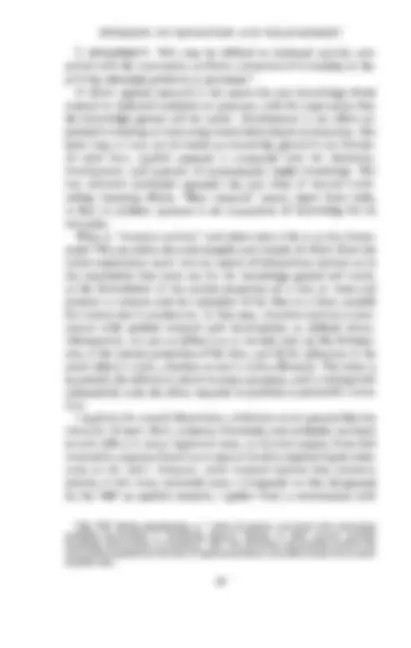
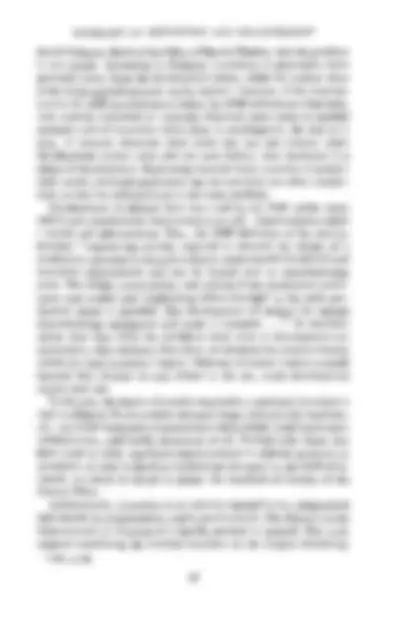
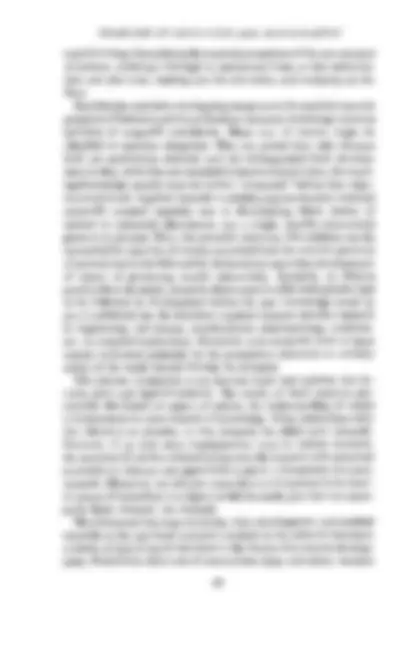
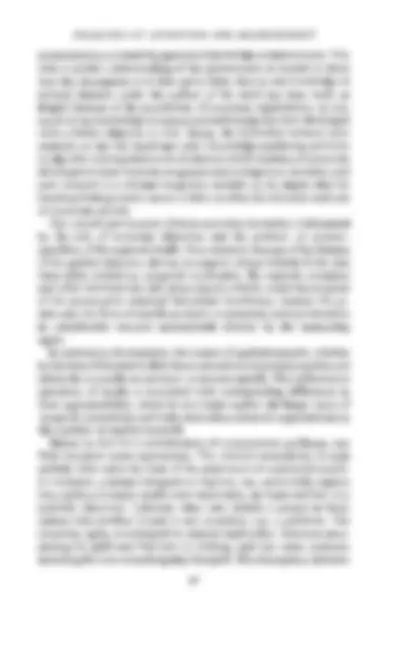
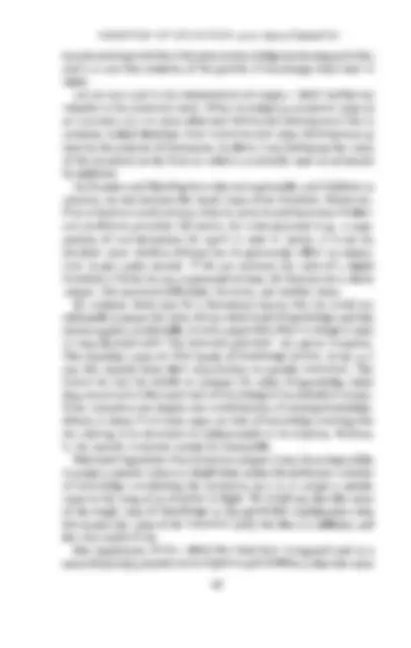
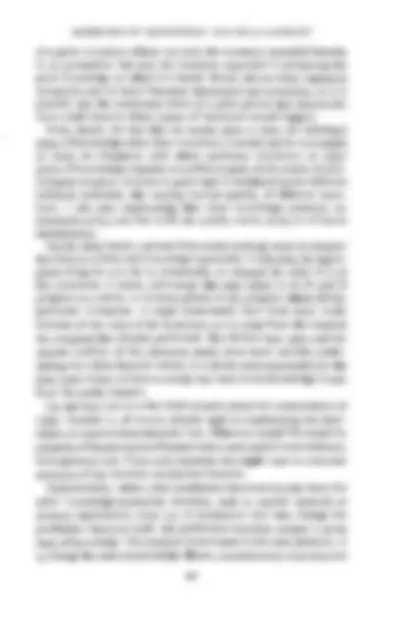
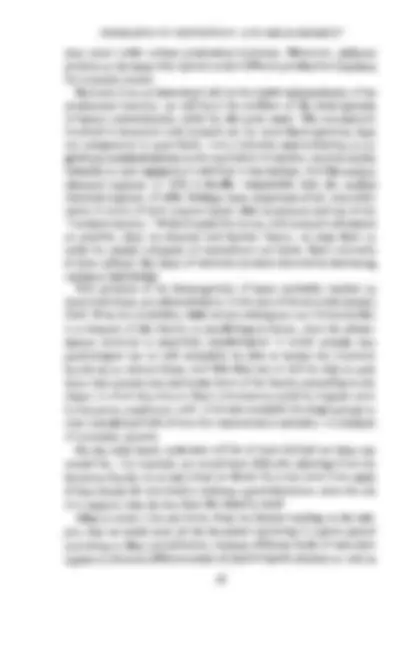
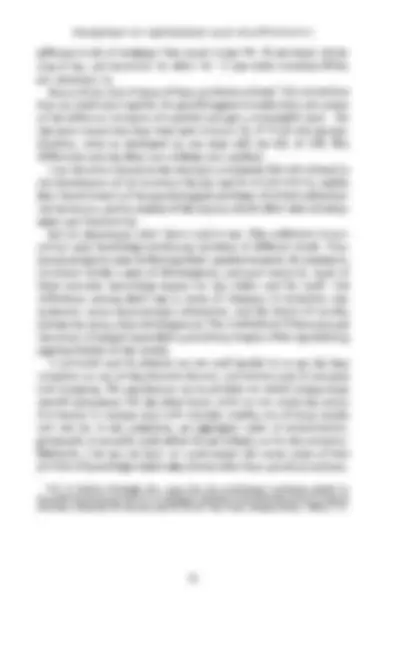



Study with the several resources on Docsity

Earn points by helping other students or get them with a premium plan


Prepare for your exams
Study with the several resources on Docsity

Earn points to download
Earn points by helping other students or get them with a premium plan
Community
Ask the community for help and clear up your study doubts
Discover the best universities in your country according to Docsity users
Free resources
Download our free guides on studying techniques, anxiety management strategies, and thesis advice from Docsity tutors
INVENTIVE activity is limited in the following discussion to action con- ... Paradoxically, this may mean that a borrowed (to use a polite.
Typology: Exams
1 / 35

This page cannot be seen from the preview
Don't miss anything!




























HARVARDUNIVERSITY
INVENTIVEactivityislimitedinthefollowingdiscussiontoactioncon- cernedwithtechnicalinventions,yieldingnewproductstobeturned
excludesocialinventions,newmethodsofinducinghumanbeingsto competeandcooperateinthesocialprogress—rangingfromsystems
firmtosuchfar-reachinglegalinventionsasthemoderncorporation
socialinventionsoneconomicproductivityareobviouslymajorand
tion,andapplicationaresodifferentfromthoseinvolvedwithtechni-
needscarcelybementionedthatwealsoexcludecreativeworkofan estheticcharacter,inwhicheconomicuseisnotthemajoraimortest. Oftheseveralcharacteristicsusuallyformulatedindefiningtech- nicalinventions,thefirstdiscussedhereisthataninventionisanew
combinationbenew?Second,mustitbeofalreadyknownproperties andprocesseswithoutcontainingnewdiscoveries? Therequirementofnewnessserves,presumably,toeliminatedupli-
tionstothestockoftechnologicalknowledge.Butifweareconcerned
thesetwoinventionssignifyagreaterinputofinventiveactivityand hence,allotherconditionsbeingequal,agreatersupplyofinventive
NOTE:IamindebtedtoJacobSchmooklerforhelpfulcommentsonanearlierversion ofthispaper.
—whetheritisspecificinformationabouttheatomicweightofsome organiccompoundorawide-flungtheoryofnuclearstructure,whether itisanaccuratedescriptionofthecoastlineofthePersianGulforthe mostspeculativetheoryofgeologicalformation—ispotentiallyuseful, sinceanyadditiontoourtestedknowledgeofthematerialuniverseis exploitableineconomicproduction(thelatterbeingareshufflingofthe
mostscientificdiscoveriesareimmediatelyuseless—certainlysofar asthescientistisconcerned,forheisnotattemptingtheapplicationof theresultstousefulendsevenifheisawareofthem,whichoftenheis
thoseofscientists.Finally,sincescientificdiscoveryisusuallygeneral
potentialpracticaluses—technicalinventionsamongthem(themain
nineteenthcentury,therehavebeenmanymorescientificdiscoveries
betweenscientificdiscoveriesandconsequentinventionshavebeen
beenfullyincorporatedintothecorpusofscientifictheory.Theselags andleadsareindicationsthatthetwotypesofadditiontoknowledge
ofthefieldofinquiryandsharperfocusingofresearch,itwouldseem tomebettertokeepthelineofdistinctionandrestrictthedefinition
designedforpracticaluseinproduction—evenatthedangerofover-
maysupply.
itmustbetheproductofamentaleffortabovetheaverage—although
aremadeinthedailyprocessofproductionandaretheresultoflow-
ductivityisslight.Itismerelythataninventionissupposedtobeof
someminimummagnitude—magnitudenotofeconomicimpactbut ofinputofsomeuncommonmentalcapacityofhumanbeings.
inconnectionwithpatentlegislationoranyothersystemofrewards, wemayaskwhythedistinctionbetweeninventionsandimprovements
itemfromthemostobviousimprovementtothemostmajo.rinvention,
ifweassumethattheuppersegmentofthisrange,i.e.,theinventions
producedbypeoplewithunusualequipment,andhencedistinguishing
distinctionsuggeststhatwhileinventionsandimprovementsmaybe gradedbytheireconomicmagnitude,nosuchcontinuityexistsinthe rangeofhumanabilityinvolved;thattherearequalitativedifferences betweentheeffortandcapacityassociatedwithinventionsandthose associatedwithobviousimprovements,sothatnoshiftfromtheone totheothercanbeattained,nomatterhowmuchtraining,education,
andimpliesthatthedistinctivefactorcanbeidentifiedandstudied. Whetherthisisavalidassumption,whetheraneffectivelinecanbe
connectedwiththeformercanbeidentifiedandstudied,arequestions
problemofmeasurement,andweshallreturntoitinthenextsection. Athirdcharacteristicofatechnicalinventionthatmaybesuggested
lishedgoodsormakepossibletheproductionofnewgoodsforwhich thedemandissufficienttocovercosts.Thereasonforsuggestingthis
interestedininventionsbecauseandinsofarastheycontributetothe growthofeconomicproduction.Yetonecaneasilyenvisageinventions thatdonot.Forexample,anewdeviceforproducinghairpinswhich ismorecostly—nowandintheforeseeablefuture—thanthepresently useddevices,isnotusefulinthesenseinwhichweemploythisterm. Thedifficultywiththiscriterion—andithasnotbeenusedinpatent
secondcharacteristic.Andwhilesomeinventiveactivitymaybemere
exaggerated,Iwouldstronglyurgethatthecriterionofusefulnessbe retainedasaconstituentcharacteristicinthedefinitionofatechnical
inventiveactivityandinventions.Forthiswholematterofusefulness
cernedwithmeasurement.
TheMagnitudeofanInvention
Theprecedingsectionledtoadefinitionofinventiveactivityasbeing concernedwithtechnicalinventions,i.e.newcombinationsofexisting knowledgeindevicespotentiallyusefulineconomicproductionand resultingfromamentalperformanceabovetheaverage.Thedifficul- tiesinmeasuringanactivitysodefinedareperhapsobviousenough; butbeforewereviewtheavailableindexes,itmaybewelltodiscuss explicitlytheproblemsofmeasurementbydealingwiththemagnitude ofasingleinvention. Itfollowsfromtheearliercommentsthataninventionhasatech- nicalandaneconomicside;and,ofcourse,ithasapastandafuture. Thecombinationofthesetwosetsofaspectsgivesusfourviewsofthe
aviewofthetechnicalpast;(2)thetechnicalpotential,i.e.theeffect
technologyingeneral—aviewofthetechnicalfuture;(3)theecono- miccost,i.e.theresourcesconsumedorforegoneinthe"production" oftheinvention—aviewoftheeconomicpast;and(4)theeconomic
totheproductionofnewgoodsintheeconomy—aviewoftheecono- micfuture.Ifwecouldsetdownmeaningfulfiguresforeachinvention undereachofthefourheads,theproblemofmeasuringtheinputand outputofinventiveactivitywouldbealmostentirelyremoved,forany remainingdifficultyofidentifyinginventionscouldbeminimized.As
under(3)and(4).Butknowingthatnoeasyanswersareavailable,I feelcompelledtoretain(1)and(2),forwhateverhelptheexamination ofthetechnicalproblemsandpotentialsofaninventionmaygiveus
bringsusrightbacktoinventionastheproductofhumanperformance ofmorethanaveragequality.Thedifficultyisobviouslyrelatedtothe existingstockofknowledge;anditisassumedthatsuchknowledge
sufficientconditionofaninvention.Giventhesearchforaneconomic- allyusefuldeviceaspartofthetask,theotherconditionistheability tousetheknowledgeinsomenewandeffectivecombination. Whileamereeconomistmusttreadwarilyhere,itdoesseemtome
differentmagnitudesofinventivecapacityandofitsinput.Toillus-
theinventionofaneffectiveengineusingnuclearpowerforairtravel wouldrepresentthesolutionofagreatertechnicalproblemthanthe inventionofanotherandbettermechanicalpen. Theseareofcourseselectedexamples;acomparisonofthetechnical problemsresolvedbyWatt'sinventionsrelatingtothesteamengine andFaraday'sandhissuccessors'ontheelectricgeneratorwouldnot yieldunequivocalanswers.AllIamarguingisthatabovethethreshold whereobviousimprovementsceaseançlinventionsbeginthemagni- tudesofthetechnicalproblemsresolvedbyinventionsdifferwidely.
power;others,becausetheyinvolvetheconversionofavast,complex,
otherthanasuitabilityforvariouspurposes,arestillnotwellknown. Bycontrast,thetechnicalproblemsinotherinventionsseemtobeof smallermagnitude,becausetheyaremodificationswithintheexisting
wronginthinkingthattheBessemerconverter,measuredbythemag-
thantheopen-hearthfurnace;yetitwasthelatterandnottheformer thatbecamethebasisofmodernsteeltechnology,afoundationupon whichalongseriesoftechnicalimprovementsandchangeshasbeen built. 3.Theeconomiccostofaninventioncanpresumablybemeasured
inventorandhiscollaboratorsandthematerialsconsumed,valuedin termsofalternativeusesormarketprices.
First,ifninventorsareworkingoninventionXandoneissuccessful, weshouldpresumablyincludetheresourcesusedbyallninventors, notjustbytheonesuccessful.Thiscreatesnoproblemifthecostofa
couldpresumablyusetheinputofallwould-beinventors,successful andotherwise.Butthespecificationofthecostofanysingleinvention, orofalimitedgroupofthem,callsforthecapacitytoidentifyallthe
Second,howfarbackinthelineofcausationshouldwegoincon-
resourcesdevotedtosecuringtheknowledge,viascientificresearch
bodiedinagiveninvention.Butmoreimportant,ifwetreatinventive
chargeitwiththecostsofscientificandotherknowledge(exceptas
basedonawidestockofantecedentknowledge—withsuchcosts.
ventionanddetermininghowfarforwardthecostcalculationshouldbe carried.Ifweadheretothedefinitionfollowedhere,aninventionis completedwhenitisshownto"work"andwhenaclaimofpossible economicusefulnessismadeforit.Substantiationofthisclaimmight requireaprolongedperiodoftrialuseandadaptation,apilotopera-
mentsthatmakeforeconomicalproduction.Theeconomiccostofa
testedinventionmay,therefore,bealargemultipleofthecostofan untestedinvention;anditisimportanttodistinguishbetweenthetwo.
theeconomiccostofuntestedinventionsthatcanbecalculatedforthe wholeuniverseofinventions;anditistheeconomiccostofuntested
Butitisusefultokeepinmindtheadditionaldevelopmentcostsin-
innovationsinproductiveactivity. 4.Thegrosseconomicvalueofaninventiontotheinventororthe privateuseriseitherthecapitalsumreceivedforitorthecapitalized valueofthereturnsthatmaybeassignedtoit.Suchassignmentand
society.'
establishedgoods,thegrossmagnitudeofitseconomiccontribution
permit.Giventhedataonsuchadditionalyield,itsproperevaluation requires,however,eitherknowledgeoforassumptionsconcerningthe priceelasticitesofdemandandsupply.2Ifaninventioninvolvesanew product,aroughapproximationtoitseconomicmagnitudeseemsto metobepossibleonlyifthenewproductcanbetreatedasasubstitute foranoldsothatitagainbecomesfeasibletoestimatetheadditional yieldandseekforadefensibleeconomicbasisforevaluatingit.
forecast,theweightofwhichisgreaterthelongerthefutureofanin-
discountingrate).Withalargeproportionofinventionsmadenever reachingthedevelopmentstage,theestimateoftheirgrosseconomic contributionispurelyaforecast;andthatoftheirnetcontributionis
(^1) Itmaybeofinteresttonotethatinestimatingthereturnsfromresearchanddevelop- mentexpenditurestheprevailingpracticesoffirmsfollowratherroughandready formulas,utilizingarbitrarypercentagesofsalesorreturns,arbitrarytimeperiodsover whichtocredittheinventionorimprovementwiththeeffects,andperhapsnoless arbitraryestimatesoftheprobabilityofsuccess(see,e.g.,ScienceandEngineeringin AmericanIndustry:FinalReportona1953—54Survey,NationalScienceFoundation, 56—16,Washington,1956,pp.49—52). 2Seetheingeniousanalysisforthecasesofhybridcornandrelatedinnovationsinthe paperbyZviGriliches,"ResearchCostsandSocialReturns:HybridCornandRelated Innovations,"JournalofPoliticalEconomy,October1958,pp.419—431.
obviouslybetakenintoaccount—minorimprovementsintheprocess orproductitself,fromthestandpointofthefirm;andboththeseand anacceleratedrateofminorimprovementselsewherefromthestand- pointofsocietyasawhole.
Severalconclusionswhichemergefromthisalltoosketchydiscus-
theproblemofmeasurement.
technicalproblemovercome,technicalpotential,andeconomiccon- tribution.Untestedinventionsmaydifferwidelywithrespecttoecono- miccostandtestedinventionssurelydifferwidelywithrespecttotheir developmentcosts. Second,themagnitudeoftechnicalproblemsovercomemaybeposi- tivelycorrelatedwiththetechnicalpotentialofaninventionandthe
althoughnonetoosecurely,apositiveassociationbetweenthemagni- tudeoftechnicalproblemsovercomeandtheeconomiccontribution ofaninvention. Third,thereisnoreasontoassumesignificantassociationbetween theeconomiccosttotheinventorofasingleuntestedinventionandits
assumedifweassigntoagiveninvention,orarelatedgroupofthem, thetotalcost,includingthatofunsuccessfulattempts.Forifagiven areaseemstoawidegroupofinventorstobepotentiallyprofitable,
elsewhereandifthejudgmentiscorrect,economiccostsofinventions wouldbelargeinareaswheretheirpotentialeconomiccontribution islarge.This,ofcourse,assumesfreemarketoperationinthematch-
governmentsubsidies,etc.Andifweincludedevelopmentcosts,there
bepositivelyassociatedwiththepotentialeconomiccontribution,for
forces—thegreaterresourcesneededfordevelopmentwouldflowin directionsthatseemmostpromisingfromthestandpointofpotential
althoughnotnecessarilybythecriteriaofsocialusefulness.
MeasuresofInput
identifyingtheinputandinevaluatingit. Themajorquestionsofidentificationmaybestatedasfollows.Does theeffectiveprosecutionofinventiveactivitydependuponacertain
possiblesubstituteinthecombinedeffortsofseverallessgiftedindi- viduals?Orisinventiveabilitywidelydistributed,evenifatdifferent
sizeoftheadultpopulationandtheresourcesavailableforitseduca- tionandbythetimeandfacilitiesneededforeffectiveinventing?Is
nhoursbyapersonattheylevelofability,andsoon? Ifweassumewidevariationsininventiveabilityanddisregardfor
andmaterialfacilitiesrequiredforproducinguntestedinventions,in
hoursspentonsuchactivity;and(3)weightthesehoursbysomescale ofinventiveability.Multiplyingthehoursbytheappropriateweights
capacityhavebeen"put-in"duringtheyear.
gestedabovecaneasilybegleanedfromtheliterature.Inhisilluminat-
electrical,mechanical,chemical,industrial,mining,andmetallurgical engineers,pluschemists,assayers,andmetallurgists;thewidergroup includesalsocivilengineers,architects,designers,draftsmen,thevery minorgroupofinventorsproper,andsurveyors.Fromourstandpoint twooftheconclusionsareofparticularinterest.First,eveninrecent
ReviewofEconomicsandStatistics,August1957,pp.321—333.
assumptionsimposeontheuseofthenumberoftechnologistsasan indexofphysicalvolumeofinputofinventiveactivity. Evenifwecouldestablishascaleandmeasureman-hoursofinven-
other(material)resourcesemployedininventiveactivityandforcom- parisonofthetotalwithotherinputsintheeconomy?Canweassume thatcompensationpaidbythemarkettohiredinventors(full-orpart-
inventorreflectsayardsticksimilartothatusedforotherresourcesin theeconomy?Tobemorespecific,canweassumethatthecompensa- tionofahiredinventorisdeterminedbymarginalproductivity,with theflowofsupplysuchthatthemarginalcostofanadditionalunitwill
difficultyofestimatingtheeconomiccontributionofinventiveacti-
aggregate,compensationtoinventors,hiredorindependent,full-time orpart-time,iswellbelowanyreasonableestimateoftheassignable socialproductoftheiractivity—partlybecauseoftheexistenceofnon- pecuniaryrewards,andlargelybecauseofthenarrownessoftheprivate marketdemandformanytypesofsociallyusefulinventions.Onthe otherhand,onemayarguethat,insomeindustriesinwhichinventive
technicalchangepotential,aggregatewagespaidtoemployedinvent- orsaretoohigh(incomparisonwithothercommoditiesandservices)
inventivemindandtheeducatedhack.Sincethemarketmechanism
salariesofhiredinventorsactuallymeansanincreaseintheinputof
somescaleofinventivecapacity.
itsqualityorproductivity.Obviously,itisamajordeficiencyofthe availableseriesonresearchanddevelopmentexpendituresbycorpora-
considerationofotherqualificationsoftheseries,Iwouldliketostress oneimplicationoftheargumentabove:thatindealingwiththeinput ofinventiveactivityanattemptmustbemadetogobehindthemoney
fieldofinventiveintelligencetestsandpersonalitystudiesandwould,
betterevaluatedbymarketprices.Suchameasurewouldstillbemore usefulthandollarvaluetotalswhichreveallittleabouttheproductive
thebottleneckininventiveactivity,andifwecanderiveacceptable
abletostudytheeffectofdifferencesinitsinput,incombinationwith
tures(RandD),theyobviouslysufferfromlimitationsotherthanthe inadequacyofthemoneyyardstickinmeasuringtheinputofinventive (thevolumeofinventiveactivity,asdistinctfromthevolume ofitsoutput).Tobeginwith,theyexcludeindividualandindependent inventors,whetherfull-orpart-time;andinthelightofSchmookler's
consideredafairlycloseapproximationtoinventiveactivity),butalso onbasicresearch(asmallfractionofthereportedtotal)andfarmore
thelevelandtrendofRandDexpenditures,includingandexcluding governmentfinancing).Thelineofdistinction,althoughdifficultto draw,isimportant:developmentexpendituresbeginwhenaninven- tion,havingbeenshownto"work,"hasbeenchosenforapplication
ventionintoaninnovation).Suchexpendituresarelikelytobelarge
andmakingsuccessivetrialsandremovingerrorsarealltimeconsum- •ingandrequireagreatdealofmaterialcapitalandskilledresources. IdonotmeantodisparagedevelopmentworkwhenIexcludeitfrom inventiveactivity;itcertainlymakesdemandsuponingenuity,tech-
input.Moreover,wehavelongstatisticalseriesonpatentsforanum- berofcountriesaswellasvoluminousunpublisheddatainthefilesof thenationalpatentoffices.Hence,insteadofbeginningwithafurther
immediatelyconsiderthedataavailable,andbeginwiththestatistics onpatents. Beforenotingsomeofthelimitationsofthepatentseries,itwould bewelltopointoutitsadvantages.Apatentispresumablyissuedafter
whetheritmatchestheinventor'sclaim,and,inmostcountries,after
feasibledevice.Furthermore,sinceittakestimeandmoneytosecure
patentwarrantstheexpenditure.Tobesurethecostsarenotlargeand
ficationtheyimposeuponthestatisticsofpatentsasacountofnew,
limited. Notethattheseandsubsequentcommentsreferprimarilytopatents issued—nottopatentapplications.Althoughsometimedistortionis introducedbythevaryingefficiencyofthepatentofficeintotheseries ofpatentsissuedascomparedwithapplications,itistheissuanceof apatentthatassuresatestofsoundnessandnewness.Eventhatmay beupsetbysubsequentchallengeahdlitigation,andperhapstheseries ofpatentsissuednetofupsetsisthemostunequivocalindexofnew devicesofpotentialeconomicvalue.Butthereisnoneedtodwellhere ontechnicaldetailsandonthepossibilitiesofusingoneseriesasan approximationtotheother. Theimpressiveadvantagesofpatentissuesasameasureofoutput
bothidentificationandvaluation.First,notallinventionsarepatented.
(^8) ThebestrecentdiscussionofthepatentdataisthatbyJacobSchmooklerinan unpublishedpaper,"ACritiqueofPatentStatisticsandaReviewoftheLiterature."I haveprofitedgreatlyfromit,althoughIdisagreeatpointswithSchmookler'sconclusions.
Giventhecostsinvolvedinsecuringapatent,thedangerofcompeti-
device,thecostofpossiblelitigationindelendingthepatent,andthe
reapmostofthebenefitofpioneeringwithoutpatentprotection,the numberofinventionsthatarenotpatentedmaybelarge.Ithasbeen suggestedthatthefailureofthenumberofpatentsissuedinthiscoun- trytorisesignificantlysincethe1920'smaybeduetoanincreasing volumeofinventionsforwhichnopatentissought.Thishypothesis gainssomesupportfromtheincreasingproportionofpatentsassigned
tobederived.Acontributoryfactormaybethatmanyinventionsare originatingwithlargefirms(whichhavethedominantproportionof privateresearchdepartments)whofearthatsecuringofpatentsmay
scientificdiscoveryinsomefieldsfacilitatesthedevelopmentofalter- nativedevices,sothatpatentingthepioneeringdeviceisnoprotection
arevariationsintheextenttowhichtheseriesofpatentsissuedcovers allthenewtechnicallyfeasibleandpotentiallyprofitableinventions.
increasinglydeficientincoverageinrecentdecades. Butthemaindifficultywithpatentstatisticsis,ofcourse,theenorm- ousrangeinthemagnitudeoftheinventionscovered.Obviously,we
economicsense,equivalenttoanother.Itisinthiseconomicsense,the potentialeconomiccontributionofaninvention,thatwearenaturally interested.Asalreadyindicated,thepotentialeconomiccontribution ofaninventionwhenitiscompletedbutbeforeithasbeentestedand
patentedinventionsdodifferwidelyintheirpotentialeconomicmag- nitude:apatentforanewcorkscreworplowsulkycannotbeequated withoneforanewgascombustionengine(althoughtheformermay
thanthelatter).Evenatpresent,witharestrictedandselectiveuseof